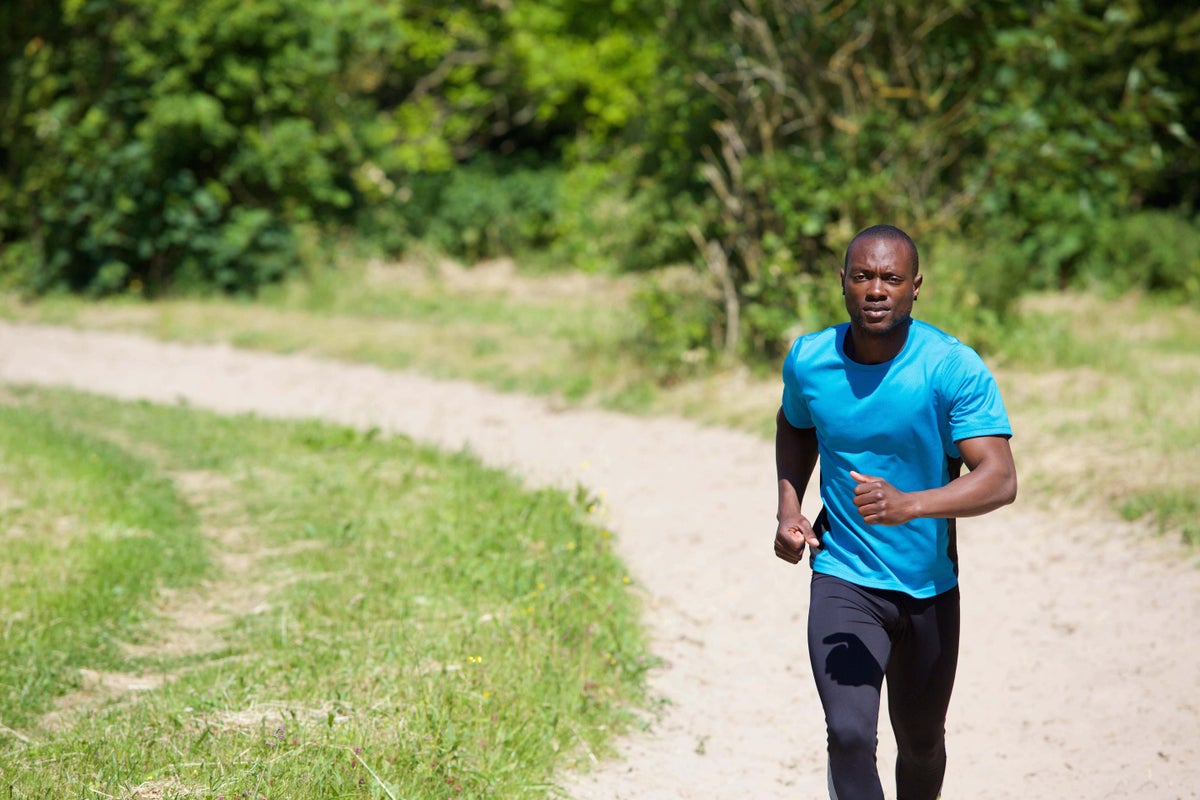
With record numbers of 86,000 people reportedly set to hit the streets this weekend for the London and Manchester marathons, it’s clear to see that running has become a well-loved and common sport.
In 2024, one in five people over 16 in the UK said they went running at least monthly, according to a survey carried out by sports magazine Our Supporting Life. However, when it comes to running, it is extremely common for athletes to get injuries such as cramping, shin splints and sore knees. Therefore for beginner runners, it’s crucial to know how to avoid this as best as possible.
“For new runners, there’s a combination of fear going into becoming a runner combined with the overarching excitement,” says head coach and founder of performance physique, Arj Thiruchelvam.
“People often have this heightened sense of fear and anxiety going into something like running. This is because it’s seen as being so challenging and difficult, but once you actually do overcome that, a lot of people then just want to run all the time, and that leads to injury.
“The most common thing I see is, without doubt, people start to just do too much running, too quickly and too frequently. This then leads to really common injuries such as shin splints, some knee pain and a lot of hip flexor issues.”
We asked experts how can new runners avoid injury and what are the best steps to do so?
The 10% rule
“I always advise my runners, particularly new runners, to do the 10% rule,” says musculoskeletal physiotherapist, Michael Francis. “This is the idea that you should not realistically be increasing your weekly mileage by more than 10%. It has been found that once you go above that 10%, you’re at higher risk of injury.
“Essentially how that works in practice is, say you run accumulatively 10 kilometres this week, you shouldn’t be running more than 11 or 12 next week. Obviously as you climb up the scale, you’ll be able to increase further. This only applies really to beginner runners – when you’ve got at least a year or two years under the belt, you will then be more adjusted to being able to fluctuate in your running mileage.”
Don’t rush the process
“Firstly enjoy the process as a new runner,” Thiruchelvam says. “If it’s a race you’re preparing for consider that you have a good couple months or weeks to prepare and try stick to a plan such as three runs a week. Don’t try and nip out for a fourth or fifth as a lot of people do tend to run every day at the beginning, but that’s the number one thing to avoid.”
Incorporate static stretching
“This is the boring part that we were taught firstly at PE in school and now again – make sure you do incorporate some static stretching after you finish your runs,” Thiruchelvam says.
“It doesn’t matter if it’s five minutes or 35 minutes, but doing something post-run like stretching your quads, hamstrings or calves will really help you feel more supple. In the long run it will also help look after muscle tissue.”
Prioritise strength training
“One of the most common injuries I see as a physio are knee injuries,” Francis explains. “Essentially whenever you’re running, you’re bending and straightening your knee a lot which means that joint takes a lot of physical load which can make it achy, painful and even inflamed.
“Usually the biggest reason why people develop this is due to weakness in the quads, glutes and hamstrings. Therefore strength training is often really crucial for runners if they are experiencing that knee pain. Another form of knee pain – this one typically on the side of the knee is usually associated with weakness in the side glutes, which then also need extra strength training.”
“The guidance for strength training alongside running is about 180 minutes a week,” Francis concludes.
“We should all be strengthening our muscle tissue, even if we’re runners. Strength training is great as a runner as it reduces our chance of injury by having extra surrounding muscle tissues around the joints, which can basically take some of the load,” Thiruchelvam advises.
Stay hydrated
Ensuring you’re getting enough hydration and fluids into the body is important to avoid injury, Thiruchelvam says.
“Our body is 70% water which means if we are dehydrated, it’s going to lead to muscle tightness and a higher chance of strains,” Thiruchelvam says.
Invest in the correct trainers
“If budgets allow it I would strongly advise to buy a new pair of running trainers,” says Thiruchelvam. “It doesn’t have to be a particular brand but something as simple as having some new cushioned trainers.”
Get an accountability partner
“When it gets into the darker winter months, motivation can drop off. However, if you get someone who can keep you accountable – perhaps it’s even joining a running club – that can always help you stay consistent and keep motivated,” Thiruchelvam says.
#running #avoid #cramps #sore #knees










